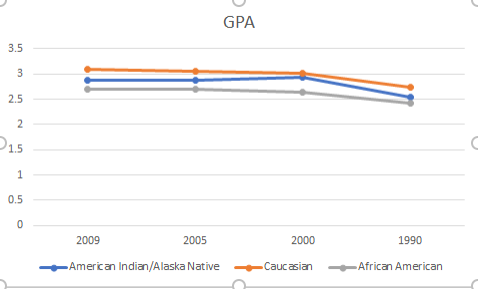 Graduating from high school is vital for Native American students, their families, their communities, and American society. The policy in education must be changed to include Indigenous studies in curriculum for students in K-12 to benefit all students of various cultures, but more specific to Native American students. My hypothesis is culturally based education programs included in primary education curriculum increases the graduation rates of Native American high school students. My independent variable is culturally based education program’s. My dependent variable is Native American student’s academic achievement. My causal mechanism is a sense of connection so that students will learn what is being taught in curriculum. The null hypothesis is the Native American student’s achievements are not influenced by the curriculum taught in schools. David Beaulieu supports my hypothesis in his survey and assessment of culturally based education programs. Beaulieu believes “more research must be done to provide support to the need of developing standard for the education of Native American students to be represented in what is taught. There is a need to rethink policy structure in which we have been invested in since 1930s” (p. 59-60). A second study, by Pauline Rindone, admits there is insufficient attempts in investigating achievement motivation and educational attainment from an Indigenous view. In Rindone’s study, families are a major factor for student’s achievement. “Family encouragement and involvement along with traditional values are all contributing factors” to higher success rates for the Navajo participants in her study (p. 4). Native American students are in a drop-out crisis. We must motivate Native American students and prepared them to be future leaders. Our future depends on our children and our first step to helping them is the provide them with the tools to succeed. The most powerful tool for students is education. As multiple researchers have stated, there are not enough studies to provide supporting findings to express the need to change curriculum to increase graduation rates for Native American students. However, I gathered data from the National Center for Educational Statistics (NCES) to compare grade point averages among different ethnicity groups to support the need for student academic achievement, as my hypothesis states. NCES collects and analyzes education statistics from within the United States department of education and other nations. An online analysis tool provides a national report card for National Assessment of Educational Progress (NAEP) which is presented in two ways: average scale scores that represent how students performed on assessments and achievement levels which describe what students should know and be able to do. According to the scatter chart, students’ grade point average increased from all three ethnic groups from 1990 to 2000. It appears the students from the African American group are consistently below the Native American and Caucasian students. The observation of differences in GPA across racial groups may not have significance, but it provides data to support Native American students' achievement. The Native American students increased their GPA in 2000, almost equal to the Caucasian students, then dropped back down in 2005 and stayed consistently beneath a 3.0 GPA. Academic achievement for Native American students needs to be increased. The lack of culturally based education could be a factor in students' performance. Due to the absence of Indigenous views and representation, there becomes a disconnect for Native American students. This chart provides grade point averages 2.94 and below for American Indian/Alaska Native students. Although it is not specific to my variables, there is a connection to provide data for students' achievement. Beaulieu, David. “A Survey and Assessment of Culturally Based Education Programs for Native American Students in the United States.” Journal of American Indian Education 45, no. 2 (2006): 50–61.
“National Center for Education Statistics (NCES) Home Page, Part of the U.S. Department of Education.” National Center for Education Statistics (NCES) Home Page, a part of the U.S. Department of Education. Accessed November 22, 2019. https://nces.ed.gov/. Rindone, Pauline. “Achievement Motivation and Academic Achievement of Native American Students.” Journal of American Indian Education 28, no. 1 (1988): 1–8. about.jstor.org/terms. Corlette Tahhahwah
0 Comments
Leave a Reply. |
AuthorWrite something about yourself. No need to be fancy, just an overview. ArchivesCategories |

 RSS Feed
RSS Feed
